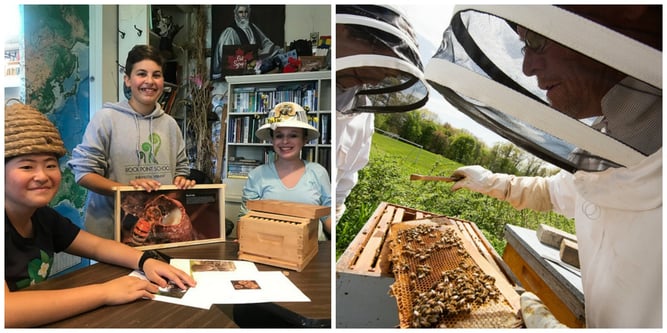
Gus, our history teacher and resident bee expert, has been incorporating elements of bee keeping into his curriculum for several years. This year, with the importance of pollinators becoming more widely known, the severe decrease in the bee population, and our efforts to cultivate more of our own food, Gus is including more pollinator education throughout his classes.
Students learn about the the anatomy of bees and their life-cycle, the roles each bee plays in the hive, and different types of bees. Another goal of the curriculum, is to teach students about modern bee-keeping, including different tools, techniques, and approaches. This includes Lorenzo Langstroth's discovery of Bee space and his creation of the Langstroth hive with interchangeable and movable parts that allow for inspection and management without destroying the hive. Students learn how to care for a hive and understand bee behavior.
As a hands-on part of their study of bee-keeping, students extract honey. In this process they begin to understand each step of the process from how the frames are used to how to safely bottle honey. Students also learn how to harvest wax and propolis, which can be a powerful medicine. This winter we plan to use wax for lip balms and salves.
Finally, students explore the various threats to pollinator populations, including herbicides, fungicides, insecticides, microwaves, as well as the impacts of modern agricultural techniques including monoculture farming. They are learning how to foster healthy environments for pollinators, with inspiration from the work of Gunther Hauk, and will see the creation of the Pollinator Meadow on the Rock Point property to make a positive change for pollinator populations. The meadow will be located under the solar orchard, as a way to increase habitat, reduce emissions from mowing, and gain an educational space.

